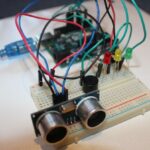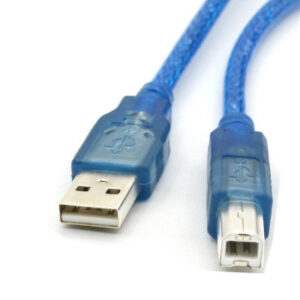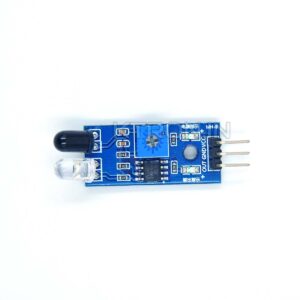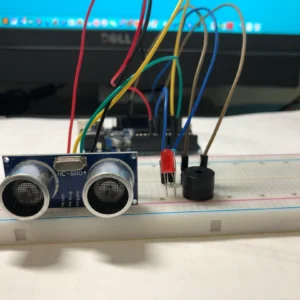Description
Long Description:
A Line Following Robot is an autonomous robot designed to follow a pre-defined path, typically a black line on a white surface (or vice versa). Using IR sensors to detect the line and a motor driver to control the movement, the robot adjusts its direction based on real-time feedback from the sensors. This project is widely used in robotics education and competitions, offering insights into sensor-based control systems.
- IR Sensors (Line Detection): The key to a line-following bot is its array of infrared (IR) sensors, which are responsible for detecting the contrast between the line (usually black) and the background (usually white). The IR sensor emits infrared light, and based on the reflection, it detects whether the surface underneath is light (white) or dark (black). A typical robot uses two or more IR sensors for better accuracy and decision-making.
- DC Motors: The movement of the robot is driven by two DC motors, typically attached to the left and right wheels. The speed and direction of the motors are controlled to steer the robot along the line. When the robot detects that it is veering off the line, it adjusts the speed of one motor to correct its direction, ensuring it stays on track.
- Motor Driver (L298N or L293D): The motor driver is an essential component that allows the microcontroller to control the direction and speed of the DC motors. Commonly used drivers like the L298N or L293D serve as an H-bridge circuit, which can independently control the two motors for forward, backward, left, and right movements based on sensor input. The motor driver also handles the power needed by the motors, as microcontrollers typically can’t provide sufficient current.
- Microcontroller (Arduino, NodeMCU, etc.): The microcontroller processes the data from the IR sensors and sends commands to the motor driver to control the motors. An Arduino or NodeMCU is commonly used for this project because they are easy to program and can interface easily with sensors and motor drivers. The microcontroller is programmed to read the sensor input continuously and make decisions to keep the robot aligned on the line.
- Algorithm (Line Following Logic): The microcontroller runs a simple algorithm to interpret the sensor data and adjust the motors accordingly. For example, if both sensors detect the white surface, the robot moves straight. If the left sensor detects the black line, the robot slows down the right motor to steer left, and if the right sensor detects the black line, it slows down the left motor to steer right. The algorithm can also include more complex behavior, such as handling sharp turns or intersections.
- Power Supply: The robot is usually powered by a battery pack, commonly using rechargeable Li-ion batteries or AA batteries. The battery supplies power to both the microcontroller and the motors, ensuring the robot operates autonomously without needing to be connected to a power outlet.
- Chassis: The robot’s frame, typically a simple platform with wheels and space to mount components, holds the sensors, motors, and electronics. The chassis can be a custom-built one or a pre-made kit, designed for educational purposes or DIY projects.
Applications:
- Educational Robotics: The line-following robot is a popular project for teaching robotics, programming, and control systems, making it ideal for students and hobbyists.
- Automation: In industrial automation, similar principles are used for robotic arms or conveyors that follow pre-set paths.
- Robotics Competitions: Line-following robots are often featured in robotics competitions, where they must navigate complex paths with obstacles, intersections, or varying line conditions.
How It Works:
- The robot moves forward along a line on the floor.
- IR sensors continuously check whether they are over the line (black) or the background (white).
- Based on the sensor readings, the microcontroller adjusts the speed of the motors.
- If the robot veers off the line, the microcontroller corrects the direction by adjusting one motor’s speed, allowing the robot to steer back onto the line.
- The process repeats, with the robot continuously adjusting its path as it follows the line.
In summary, the Line Following Robot is a simple yet powerful demonstration of robotics principles, using IR sensors, motors, and a microcontroller to autonomously follow a path. This project is widely adopted in education, automation, and robotics competitions, providing a hands-on introduction to sensor-based navigation and motor control systems.









Reviews
There are no reviews yet.